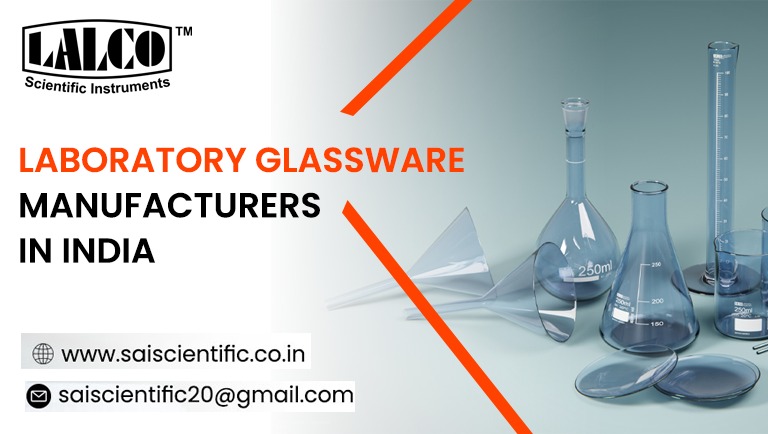These apparatus are essential for conducting experiments and ensuring accuracy and safety in laboratory environments. Sai Scientific Instruments supplies its Laboratory equipment to a diverse and large customer base which includes Pharmaceutical Industry and Pathological Laboratories, Research Laboratories, Colleges & Universities, Agricultural sector, Food & Dairy Industry, Government research centers & industries.
Here’s a Detailed List of 35 Laboratory apparatus commonly used in science labs along with their uses:
1). Beaker
Use: For holding, mixing, and heating liquids. It is a basic container in the laboratory with a spout for easy pouring.
2). Graduated Cylinder
Use: Used to measure the volume of liquids accurately.
3). Test Tubes
Use: Small cylindrical tubes used for holding small amounts of substances during experiments.
4). Erlenmeyer Flask (Conical Flask)
Use: Ideal for mixing and heating liquids without the risk of spillage due to its conical shape.
5). Volumetric Flask
Use: For preparing solutions to a precise volume.
6). Burette
Use: Used in titrations to dispense liquids with high accuracy.
7). Pipette
Use: To transfer precise volumes of liquid, often used in conjunction with pipette fillers.
8). Dropper (or Pasteur Pipette)
Use: For adding small amounts of liquids drop by drop.
9). Funnel
Use: Helps in transferring liquids or powders into a container with a small opening and is also used for filtration.
10). Filter Paper
Use: Used with funnels for separating solids from liquids during filtration.
11). Test Tube Rack
Use: Holds and organizes test tubes in an upright position.
12). Test Tube Holder
Use: A clamp for holding test tubes, especially when they are hot or being heated.
13). Test Tube Brush
Use: For cleaning the inside of test tubes.
14). Watch Glass
Use: A shallow glass dish used for evaporating small amounts of liquid or as a lid for a beaker.
15). Crucible
Use: A small container used for heating substances to very high temperatures.
16). Mortar and Pestle
Use: For grinding and mixing solids into powders.
17). Bunsen Burner
Use: A gas burner used for heating, sterilization, and combustion.
18). Tripod Stand
Use: A three-legged stand used to support apparatus during heating.
19). Wire Gauze
Use: Placed on a tripod stand to distribute heat evenly from a Bunsen burner.
20). Tongs
Use: For picking up and holding hot equipment like crucibles and beakers.
21). Clamp Stand (or Retort Stand)
Use: Holds equipment in place, such as burettes and test tubes, during experiments.
22). Thermometer
Use: For measuring temperature.
23). Balance (Digital or Triple Beam)
Use: Measures the mass of substances accurately.
24). Stirring Rod
Use: For stirring solutions and mixtures.
25). Glass Slide and Cover Slip
Use: Used in microscopy for holding and observing specimens.
26). Microscope
Use: For magnifying small objects or organisms to study their structure in detail.
27). Petri Dish
Use: Shallow glass or plastic dish used for culturing microorganisms.
28). Spatula
Use: For transferring solid chemicals.
29). Wash Bottle
Use: A squeeze bottle used to rinse glassware or add distilled water.
30). Desiccator
Use: Used for drying substances or keeping them moisture-free.
31). pH Meter
Use: For measuring the acidity or alkalinity of a solution.
32). Centrifuge
Use: Separates substances of different densities by spinning them at high speeds.
33). Incubator
Use: For maintaining controlled environmental conditions for growing microbial cultures.
34). Analytical Balance
Use: For measuring very small masses with high precision.
35). Safety Goggles
Use: Protects eyes from harmful chemicals, heat, and glass shards.


